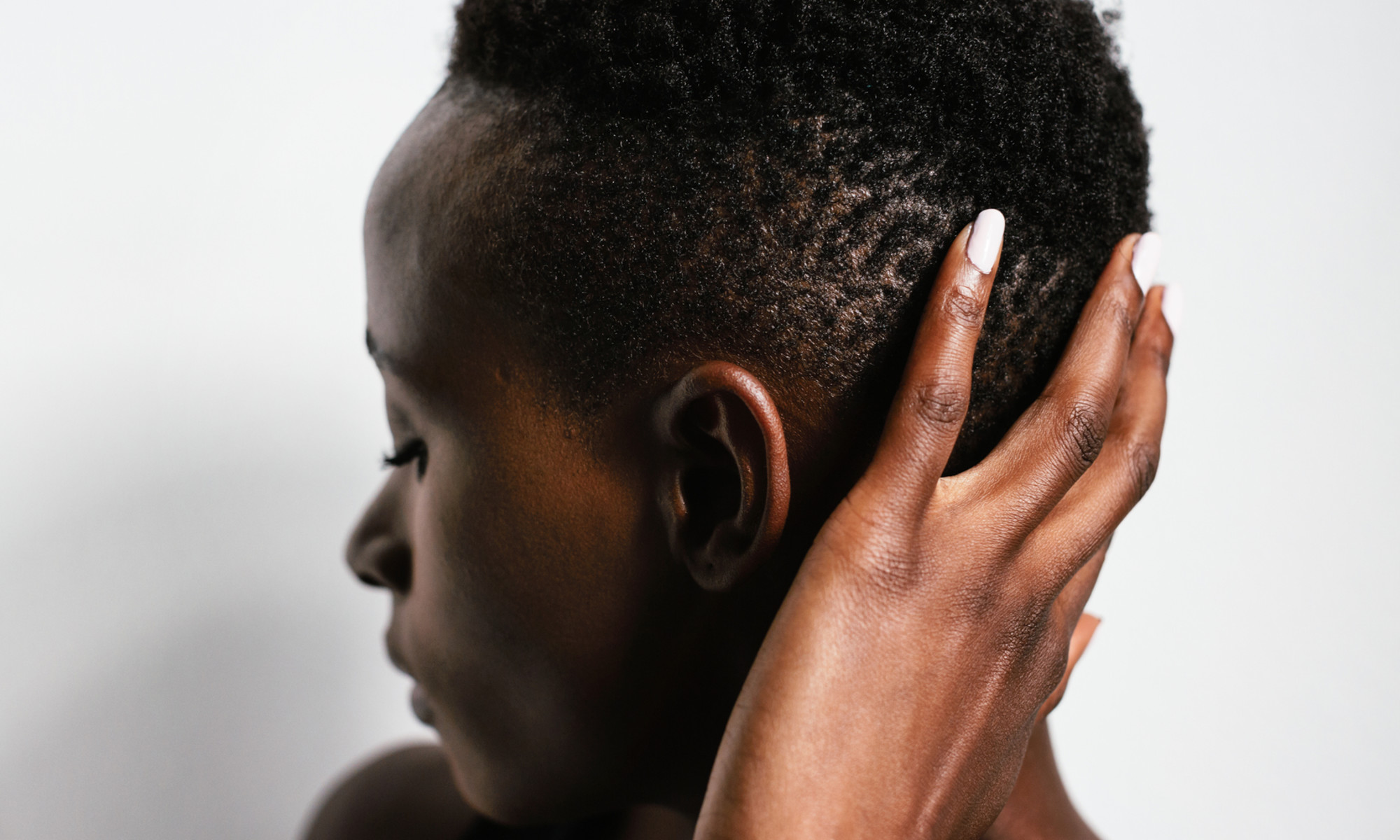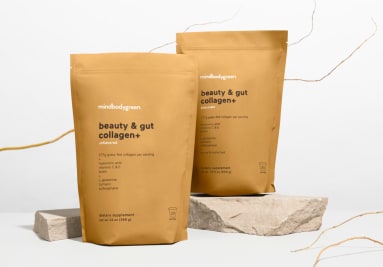Flakes & Dry Scalp? These DIY Remedies Will Provide Instant Relief
Great hair starts with a healthy scalp.


mbg Assistant Beauty Editor
mbg Assistant Beauty Editor
Hannah Frye is the Assistant Beauty Editor at mindbodygreen. She has a B.S. in journalism and a minor in women’s, gender, and queer studies from California Polytechnic State University, San Luis Obispo. Hannah has written across lifestyle sections including health, wellness, sustainability, personal development, and more.
Image by VISUALSPECTRUM / Stocksy January 12, 2023 Our editors have independently chosen the products listed on this page. If you purchase something mentioned in this article, we may Scalp care is top of mind for many people, given we know it’s vital for healthy hair growth (and shiny locks in general). Properly tending to your scalp takes a holistic approach, involving nutrition, lifestyle factors, and of course, well-formulated topical products. However, it doesn't have to cost a fortune. You can even whip up your own scalp treatments, serums, and oils—right from your own kitchen. Here are 10 ideas to get you started.
Advertisement
This ad is displayed using third party content and we do not control its accessibility features.
What is a dry scalp? Signs you may have one:
Before diving into DIY scalp remedies, let’s chat about dry scalp 101. The typical characteristics of a dry scalp can include flaking, itching, tightness, etc.
“Dry scalp can be caused by a few different things,” board-certified dermatologist Rebecca Marcus, M.D., FAAD tells mbg. More often than not, a dry scalp is caused by minor triggers. What’s more, you can be simply prone to it, just as you may naturally have dry skin.
These minor triggers are often related to products used on the scalp, or how often you wash. “A dry scalp can develop in one of two ways—either from build-up or from harsh ingredients causing flaking,” certified trichologist and professional stylist Shab Caspara tells mbg.
“When the flaking is from a dry scalp with no sebum or product build-up, it is most likely the result of harsh cleansing agents in your shampoo or even excessively hot water in the shower,” she explains.
On the flip side, “When the flaking is from an oily scalp, you may not be effectively shampooing your hair, but if that’s not the case, even stress can cause overproduction of sebum and make your scalp act out,” she concludes.
There are also two more serious causes of dry scalp, including:
Advertisement
This ad is displayed using third party content and we do not control its accessibility features.
If you’re unsure what’s causing your dry scalp or you find little relief with at-home remedies, it’s best to visit your dermatologist or a certified trichologist.
10 at-home remedies for dry scalp.
Now for the fun part: 10 quick, easy, and affordable at-home treatments that will quench your scalp's thirst ASAP.
Advertisement
This ad is displayed using third party content and we do not control its accessibility features.
“Aloe Vera is incredible for scalp health,” certified trichologist, celebrity stylist, and founder of scalp-first hair care brand Act + Acre Helen Reavey tells mbg. “Not only does it soothe the scalp, but it's full of rich vitamins and amino acids that hydrate the scalp to create a healthier environment for growth,” she adds.
The easiest way to use fresh aloe vera in your routine is via an aloe scalp mask—here’s the how-to.
Advertisement
This ad is displayed using third party content and we do not control its accessibility features.
2.
Coconut oil overnight treatment.
“Coconut oil is an occlusive emollient,” Marcus explains. “It is very hydrating and can be applied in very small amounts to the scalp to calm flakes and inflammation,” she says. If you’re looking for 24/7 hydration, coconut oil might be a bit too heavy.
However, you can use coconut oil as an overnight treatment without fretting about the excess shine on your roots. Here’s the how-to:
Advertisement
This ad is displayed using third party content and we do not control its accessibility features.
“Yogurt can act as a mild exfoliant due to lactic acid by removing dead skin cells on the scalp,” Caspara says. Though the actual concentration of lactic acid is not comparable to pre-formulated topicals, it might be just what a sensitive scalp needs.
Not to mention, yogurt is packed with probiotics, which directly contribute to a healthy skin microbiome (scalp included). Use unflavored yogurt as the base, and add in whatever other ingredients you see fit. Here are a few ideas:
You may have heard the term hair slugging pop up on social platforms as of late. While the term may be somewhat new, the process isn’t. See scalp slugging is just the same as hair oiling, which is a longstanding Ayurvedic tradition.
Before you begin applying the oil, you’ll have to select the best option. Some of these oils you may have at home, and others you may want to invest in. A few possible options include jojoba oil, coconut oil, vitamin E, rosemary oil (great for stimulating growth), and argan oil.
5.
Stimulating tea tree tonic.
“Tea tree oil is another good choice as it has anti-inflammatory properties that can help soothe an irritated scalp,” Marcus explains. However you shouldn’t put tea tree oil straight onto your scalp, as it’s more potent than other hydrating oils.
You’ll want to apply a few drops of tea tree oil (think 4-5) into another carrier oil. You can pick any of those listed thus far (coconut, jojoba, etc.). Apply the blend and either massage it in or just let it sit for a few minutes before rinsing it out.
For even easier application, add a few drops of tea tree oil to your shampoo once you squirt it into your hand and massage it in per usual.
Topically, green tea2, and its major component, epigallocatechin-3-gallate (EGCG), works well with reducing inflammation, removing bacteria and excess oil, and free radical protection. The antioxidants and polyphenols in green tea are among the most powerful in helping to protect the skin from environmental damage.
To be frank, it’s a great ingredient to look for in your store-bought hair care products and DIY projects alike. The quickest way to get the tea to your scalp at home is through a green tea rinse.
7.
Rose water scalp toner.
Now if the leave-in masks and super slippery oils aren’t for you, this one might be a better fit. You’ll be whipping up a spray-on scalp toner that can be used pre-wash, post-wash, or in between your wash days if you need an extra dose of hydration.
8.
DIY sugar scalp scrub.
If your flakes are bothering you, then you’ll want to find a safe and effective way to slough off the dead skin. Enter, a scalp scrub. You can certainly make this product yourself, but be sure to use fine sugar rather than large salt crystals.
Apple cider vinegar is a buzzy hair care ingredient, and for good reason. There's research that suggests ACV may help with dandruff: "We all have yeast living on our skin as part of its natural biome, but in certain people, it causes itching, inflammation, and flaking. ACV acidity makes a less favorable environment for the yeast and therefore may halt its growth, leading to less flaking," board-certified dermatologist Morgan Rabach, M.D., and co-founder of LM Medical NYC once told mbg.
There are plenty of pre-formulated apple cider vinegar products out there, but you can certainly make your own as well.
Your hair is made of a protein called keratin. Keratin is made up of amino acids. When you apply amino-acid-rich egg whites to the hair, their amino acids help smooth the follicle, nourish your scalp, moisturize the strand, and counteract damaging sun exposure, environmental pollution, and other stressors.
FAQ
How do you get rid of a dry scalp?
There are countless ways to tend to a dry scalp, including at-home remedies. Use yogurt, aloe vera, or coconut oil and apply it to your scalp, letting it sit for 20 minutes. Rinse it out and follow up with your normal wash routine.
How do you fix a dry scalp fast?
The fastest way to fix a dry scalp is to eliminate any and all irritating ingredients. Opt for soothing products like hydrating serums or one of the easy at-home remedies listed above.
How do you fix a dry scalp around the hairline?
Use hydrating ingredients like yogurt, botanical oils, and aloe vera as a hairline mask. Apply these ingredients (choose one of the recipes above), and let it sit for 20 minutes. You can also apply a hydrating oil like coconut oil to the hairline and leave it on overnight before washing it out.
The takeaway.
If you want healthy hair and supercharged hair growth, then you'll want to start at the scalp. A dry scalp is extremely common and has countless different causes and even more DIY-friendly remedies. The best base ingredients include aloe vera, yogurt, coconut oil, and even eggs. However make sure you're dealing with dry scalp, not dandruff—here's how to tell.

 AbJimroe
AbJimroe 

































